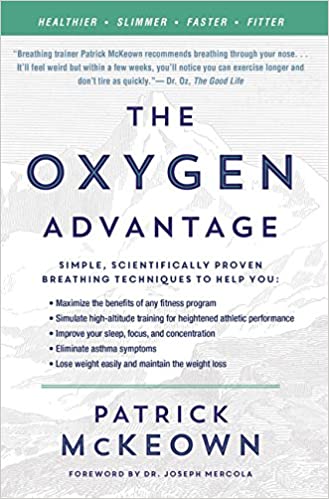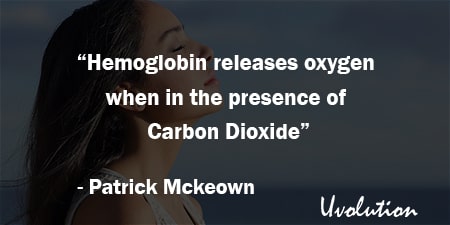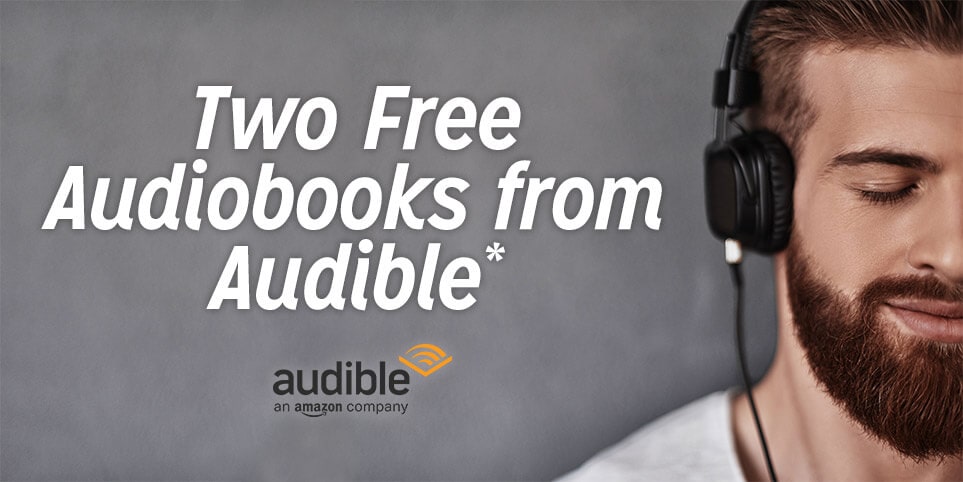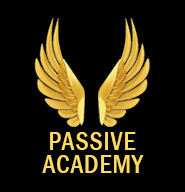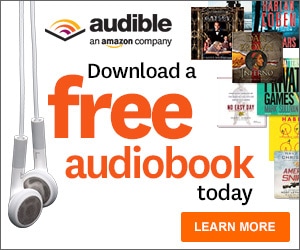The Oxygen Advantage by Patrick Mckeown
The Book in 1 Sentences
“We can live without food for weeks and water for days, but air for just a few brief minutes. While we spend a great deal of time and attention on what we eat and drink, we pay practically no attention to the air we breathe.
It is common knowledge that our daily consumption of food and water must be of a certain
quality and quantity. Too much or too little spells trouble. We also recognize the importance of breathing good-quality air, but what about the quantity?
How much air should we breathe for optimum health? Wouldn’t it be fair to surmise that air,
even more important than food or water for human survival, must also meet basic requirements? ...
The point of this book is to elevate your awareness of how you can harness your breath to reclaim your body’s natural ability to breathe in a way that will help you achieve lifelong health and fitness, whether you are running to catch up with your kids or running to win a gold medal.
My promise is that by applying the concepts and simple exercises in this book, each and every person, whether they consider themselves an athlete or not, will be able to attain tangible and profound improvements to their health, fitness, and performance within just a few weeks.
Isn’t it time you did more—conditioning, winning, living—with less effort?”~ Patrick McKeown
5 BIG Ideas
The Oxygen Advantage Book Summary
1. Chronic overbreathing!
“Scientific research, as well as the experience of thousands of people I have worked with, has
shown me the vital importance of learning how to breathe correctly. The problem is that correct breathing, which should be everyone’s birthright, has become extremely challenging in our modern society.
We assume that the body reflexively knows how much air it needs at all times, but unfortunately this is not the case. Over the centuries we have altered our environment
so dramatically that many of us have forgotten our innate way of breathing.
The process of breathing has been warped by chronic stress, sedentary lifestyles, unhealthy diets, overheated homes, and lack of fitness. All of these contribute to poor breathing habits. These in turn contribute to lethargy, weight gain, sleeping problems, respiratory conditions, and heart disease.
Modern living gradually increases the amount of air we breathe, and while getting more
oxygen into our lungs might seem like a good idea, it is in fact light breathing that is a testament to good health and fitness.
Think of an overweight tourist and an Olympian both arriving for the Summer Games. As they pick up their luggage and carried it up a flight of stairs, whom would you expect to be huffing and puffing? Certainly not the Olympian.
The biggest obstacle to your health and fitness is a rarely identified problem: chronic
overbreathing. We can breathe two to three times more air than required without knowing it.”
“Just as we have an optimal quantity of water and food to consume each day, we also have an optimal quantity of air to breathe. And just as eating too much can be damaging to our health, so can overbreathing.”
2. Why we need Carbon Dioxide?
“The crucial point to remember is that hemoglobin releases oxygen when in the presence of carbon dioxide. When we overbreathe, too much carbon dioxide is washed from the lungs,
blood, tissues, and cells.
This condition is called hypocapnia, causing the hemoglobin to hold on to oxygen, resulting in reduced oxygen release and therefore reduced oxygen delivery to tissues and organs.
With less oxygen delivered to the muscles, they cannot work as effectively as we might like them to. As counterintuitive as it may seem, the urge to take bigger, deeper breaths when we hit the wall during exercise does not provide the muscles with more oxygen but effectively reduces oxygenation even further.
In contrast, when breathing volume remains nearer to correct levels, the pressure of carbon dioxide in the blood is higher, loosening the bond between hemoglobin and oxygen and facilitating the delivery of oxygen to the muscles and organs.
John West, author of Respiration Physiology, tells us that ‘an exercising muscle is hot and generates carbon dioxide, and it benefits from increased unloading of O2 [oxygen] from
its capillaries.’
The better we can fuel our muscles with oxygen during activity, the longer and
harder they can work. In light of the Bohr Effect, overbreathing limits the release of oxygen from the blood, and in turn affects how well our muscles are able to work.”
“So how do we ensure that we breathe correctly so as to make optimal use of our amazing respiratory system?
As odd as this may seem, it’s not oxygen that exerts the primary influence on your breathing efficiency, but carbon dioxide.“
“Correct breathing both relies on and results in the right amount of carbon dioxide being retained in your lungs.”
3. Breathe through your nose. Into your abdomen.
“In order to address breathing volume and increase BOLT (Body Oxygen Level Test) score, the first step is to go back to basics and learn to breathe through the nose both day and night. As any child is aware, our nose is made for breathing, the mouth for eating.
You were born breathing through your nose, and it has been our primary conduit for breathing for hundreds of thousands of years.
It was only when our ancient ancestors were in dangerous situations that they reverted to mouth breathing to take in greater volumes of air in preparation for intense physical activity.
It is for this reason that mouth breathing is synonymous with emergency, activating the same fight-or-flight response that our ancestors experienced but these days usually without the accompanying physical exercise to allow our operating systems to revert to normal.”
And “Abdominal breathing is more efficient simply because of the shape of the lungs. Since they are narrow at the top and wider at the bottom, the amount of blood flow in the lower lobes of the lungs is greater than in the upper lobes.
The fast upper-chest breathing of people who chronically hyperventilate does not take advantage of the lower parts of the lungs, limiting the amount of oxygen that can be transferred to the blood and resulting in a greater loss of CO2.
Not only this, but upper-chest breathing activates the fight-or-flight response, which
raises stress levels and produces even heavier breathing.
Observe your own breathing when you are stressed, or watch the breathing of anxious relatives, friends, or colleagues—you will see that this type of breathing is generally located in the upper chest and goes at a rate faster than normal.
When we are stressed we tend to overbreathe and resort to breathing through the mouth. Stressed breathing is faster than normal, audible, produces visible movements, and often involves sighs.
Many people habitually breathe in this manner every minute of every hour of every day, holding them in a perpetual state of fight-or-flight with adrenalin levels high.
The work of even the best stress counselors, psychologists, or psychotherapists will be limited unless they first help their patients address their dysfunctional breathing. When oxygen delivery to the brain is reduced, no amount of talking and reasoning is going to correct this deficiency.
Stressed and anxious patients can only make the progress they really need when their bad breathing habits are addressed.”
“Upper-chest breathing is more likely to be associated with a stress response, while nasal breathing helps ensure regular, calm, steady breathing using the diaphragm.”
4. Effortless breathing
“This philosophy of effortless breathing is echoed by authentic teachers of Indian yoga and
traditional Chinese medicine. I use the word authentic in order to differentiate practitioners
who have a deep knowledge of breathing and how it affects physiology from those who don’t.
Unlike many modern Western teachers of yoga, who instruct students to breathe hard in order to remove toxins from the body, authentic teachers know that when it comes to breathing, less is more.
The traditional Chinese philosophy of Taoism succinctly describes ideal breathing as
‘so smooth that the fine hairs within the nostrils remain motionless.’ True health and inner
peace occurs when breathing is quiet, effortless, soft, through the nose, abdominal, rhythmic,
and gently paused on the exhale.
This is how human beings naturally breathed until modern life changed everything.”
“The commonly used practice of taking big breaths is based on the misconception that taking in more air will increase the oxygen levels of the blood. However, since arterial blood is already almost fully saturated with oxygen (between 95 percent and 99 percent) during normal, healthy breathing, ‘big’ breathing is rendered totally unnecessary.”
“To bring air down into the depths of the lungs, it is not actually necessary to take a big breath, as even the quietest of breaths will activate the diaphragm. When you are practicing abdominal nasal breathing, you should not be able to see or hear your breath during rest.”
McKeown has a lot of practical exercises to help us optimize how we breathe. Check out the book for more.
5. Taping the mouth at night!
“For many years I too woke up tired and lethargic, suffering from poor concentration throughout the day. The key to improving the quality of my sleep was incredibly simple: All I had to do was to learn to keep my mouth closed during sleep.
Because we are unaware of how we breathe at night, the only sure way to ensure nasal breathing is to wear light paper tape across the lips to prevent the mouth from falling open. ...
Over the years, I have introduced this taping method to thousands of people with incredible
results. Unless you breathe calmly through your nose at night, you have no idea what it feels like to have a great night’s sleep.
Taping the mouth at night is a simple but very effective technique, and while it may sound a little strange, it is well worth getting used to.”
That was my QUICK summary of the great book The Oxygen Advantage by Patrick Mckeown. If you’re interested, get your copy. There is a HUGE amount of life-changing ideas in this book, and we’ve only touched on a tiny bit of it.
Buy The Book: The Oxygen Advantage by Patrick Mckeown

GET Blinkist 7 Days FREE Trial
3000+ Book Summaries
(Audio and Text)

